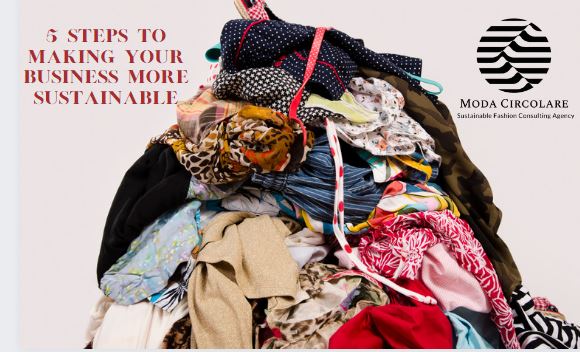
Making your business more sustainable can seem like a HUGE overwhelming task. However, like with any large project, you can simplify it by creating a checklist of smaller tasks that you can complete (depending on time and finances $$). Analyzing and understanding your full operations (from raw materials through to your final products) is key to start on the path of Sustainability. Just being more aware of where you are and where you want to be, will help in the success you will achieve.
Here is a list of five basic steps (and some examples), you can start working on to make your business more sustainable. There are a lot more, however here’s a start!!
- Reduce, Reuse and Recycle
- Commit to becoming a zero waste company. Start by recycling paper, cardboard, organic waste, batteries, electronics, plastic containers, cans and bottles etc. and try using less of everything.
- Promote litter-less and meatless lunches.
- Recycle the paper-towel from the bathrooms.
- If you are designing a product, utilize materials that are more environmentally sustainable, for example up-cycled or reclaimed. Use organic cotton versus regular cotton. Utilize materials that have high recyclability at the end of the products life-cycle.
- If your business creates some sort of waste, use the waste for something else. For example, use excess fabric to make scrunchies or if you have waste paper, make postage notes. Make your business more circular in design. For more information on the circular economy visit: https://modacircolare.com/circular-and-sustainable-fashion/
- Use recycled shipping materials and packaging. Could you use environmentally sustainable options for hangers, hang tags and packaging?
- Purchase products that are manufactured from recycled materials, recyclable, or packaged in recyclable materials. Create a Purchasing Policy outlining your environmental and ethical requirements on purchasing for the company.
- If it makes sense for your business, purchase used equipment that is still in good working order.
- Use 2 sided copying to save on paper use, if you have to print at all.
- Encourage employees to use reusable coffee mugs, plates, bowls, and cutlery. Have re-usable mugs available for use in the kitchen.
- Go digital and store everything on a cloud based server.
- Make a no printing policy wherever possible.
- Compose grass clippings and leaves and use a worm bin for decomposing food waste to potting soil.
- Create Waste Management Plan and targets to keep you on track.
- Conserve Water
- Install water meters. Tracking is the key to success.
- Repair leaking pipes, fixtures and seals and install water efficient fixtures such as toilets, urinals, sinks, and water heaters.
- For the outside, use native plants or other plants that require little water in your region and adjust sprinklers so they are not spraying water on paved surfaces.
- Use a rain barrel to collect water for landscape use.
- Work with your suppliers to reduce water usage when creating any goods for you.
- Use technologies that utilize less water.
- Create a Water Reduction Management Plan and targets to keep you on track.
- Reduce your energy use and other resources
- Figure out how much energy, gas and fuel you are utilizing (look at your energy, gas and fuel bills).
- Use renewable energy where possible and purchase carbon offsets if needed.
- Use natural light when possible and install motion activated sensors in low traffic locations.
- Replace any incandescent lighting with more efficient source (CFL or LED).
- Buy Energy Star equipment whenever possible. These use a lot less energy.
- Purchase laptops instead of desktops, as they typically use less energy resulting in $$$ savings.
- Turn off equipment at the end of the day.
- Carry out annual maintenance and tune-ups on your ventilating and air-conditioning (HVAC) system.
- Use re-chargeable batteries.
- Reduce your heat use in the office or warehouse space.
- Create an Energy and Resource Reduction Management Plan and Targets.
- Commute and Distribute Smarter
- Use public transportation, bicycle, or walk to your sustainable business and encourage your employees to do the same.
- If there is no viable alternative to driving, try setting up a carpool system.
- Implement a work from home policy.
- Distributing your products by the most efficient means to reduce pollution and greenhouse gas emissions. Look at mode of transportation and fuel use.
- Supply Chain and Ethical Purchasing
- Work with ethical suppliers in your supply chain.
- Purchase materials that are ethically sourced.
- Create a Supplier Code of Conduct. This will be given to suppliers that you utilize and ensure they understand what you expect.
By implementing some of the ideas above you will be on your way to becoming more sustainable and reducing your carbon footprint.

If you are interested in making your fashion or apparel business more sustainable, please contact Moda Circolare (“ModaC”) directly at www.modacircolare.com or email us at modacirc@gmail.com.
Moda Circolare specializes in assisting fashion and apparel companies in their journey to become more sustainable and circular in the way they conduct business. We do this by creating a seamless process that includes an assessment of current state and evaluates your strengths and opportunities, strategy and action plan development and continue this with communication and support strategies.
If you require any assistance, please fill in the form below.
Error: Contact form not found.
